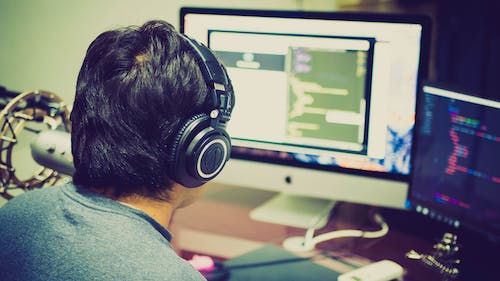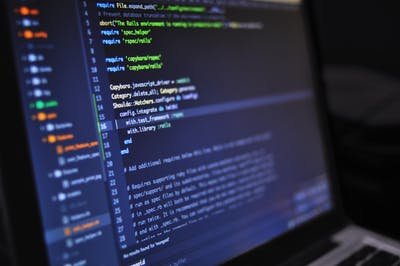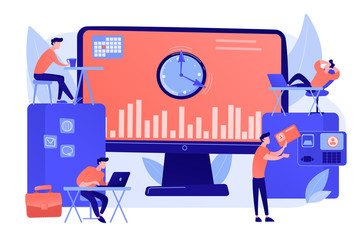Employee Screen monitoring Software is a type of activity detection in use by Companies for a variety of objectives. This includes preventing and detecting costly security breaches, increasing employee involvement, and optimising unproductive operations. Contemporary employee monitoring solutions have recently demonstrated increased possibilities for complete employee engagement and staff productivity coaching. Businesses may use these modern tools to improve job performance, create a positive working environment, and eliminate process inefficiencies.
Businesses can also boost workforce productivity and profitability by monitoring and analysing employee work behaviour. This technique can be used to analyse employee monitoring and workplace activity. Also, the data can be used to uncover trends, patterns, and connections across teams, companies, and departments. This is to get insight into business operations and how to enhance them.
This activity data covers programme usage, time spent on non-productive tasks, and each employee's most efficient time of day. Employee monitoring provides employers and employees with a comprehensive picture of how work gets done into or out of the workplace, contextualising workforce activities data and insights for both workers and employers to improve personal, group, and corporate efficiency.
Types of Employee Monitoring Software
Employee surveillance varies widely based on the software used and the sector you work. Work monitoring software comes with a variety of features and data. Most remote workers are now familiar with the concept of job tracking. On the other hand, many people are against aspects that go beyond recognising that work is being present inside what feels like micro-management or breach of privacy. Changes in tech have also made it possible to track workers' activity in various ways. Most staff surveillance had to be done internally in the workplace 10 years ago. What a difference a generation can make. Companies must reconsider how and why worker monitoring is adopted and in use in light of this shift in the way work happens.
Internet & Email
These are the key aspects of people working and, as a result, employee monitoring. We all know how important the internet is for creativity, as long as it's used correctly and effectively. The goal is to figure out how the team uses the internet and determine if there's any way of improving it. Although the use of email has decreased as a result of other communication technologies, knowing email interaction and use can still help with worker efficiency and quality. Knowing which URLs your team accesses while on the clock might help train new team members and address any productivity issues. E.g., if an employee spends too much time on the internet shopping and fails to answer a coworker on time.
Screen Capturing Tech
Many businesses have been wary of giving remote services. They are concerned that workers might be less active if the management cannot see them. Many managers simply want to see the project progress and realise that a colleague isn't heading in the wrong direction. This can be pricey and inconvenient for the person. Mainly, who has invested a significant amount of time on the project and needs to modify it. This is something that screen capture tech attempts to solve. Managers can look at snapshots of their teams' screens while they work to make sure everyone focuses on the right things.
Keylogging
Keylogging, often known as keystroke recording, records the keys pressed on a keyboard in series. These apps can also take screenshots when preset keywords are entered. However, there are also drawbacks to keystroke tracing. Some believe it infringes on employee privacy. It's also for being in use for malicious purposes. Because keylogging creates employee privacy concerns, ActivTrak and newer employee monitoring programmes do not include it. Because open dialogue and a clear workforce efficiency strategy are valued in today's method of employee monitoring, keylogging has no practical benefit. Any passwords entered by the employee are visible to anyone who views the data. Second, employees have no way of knowing whether or not a keylogger is monitoring their keystrokes.
GPS & Time Tracking
Team members can clock in and out with the push of a button thanks to time monitoring tools. They have complete control over when and how long they work, and they may stop the countdown at any time if they need to take some time away. Employees can keep track of how much time they spend working each day. And how much they worked on projects or tasks, relying on the tool. It's clear what was accomplished that day. Directors can use this tracking information in the future to build more accurate estimations and budgets. Agents, designers, attorneys, and consultants are just a few industries that keep track of time for their employees. File tracking, downloads, and transformations are examples of deeper tracking.
Instant Messaging Apps
Since they are faster, more robust, and less expensive to use, instant chats like Slack and softphone applications like WhatsApp and Skype have supplanted calls and texts, email, and texting. Remote workers use these tools to communicate, send and get data, and interact. As a result, certain employee monitoring technologies allow managers to examine how employees utilise software in real-time or afterwards by examining recorded data. Employers, on the whole, merely want to know that info is being handled effectively and safely. This strategy can also resolve conflicts, such as bullying at work. Watching instant messaging apps isn't as helpful as most of the other options we've discussed.
Advantages of Employee Monitoring Software
Data-driven details will aid you with a more good workforce by identifying your workers' strengths and flaws. Just to see wherever people lack and where they excel, this offers you the ability to distribute duties more effectively. Pairing your team member's abilities and skills to the proper assignment is critical and allows them to perform great jobs!
It's just as crucial to notice team members' flaws. Make some connections with them. Check if they know how to utilise their tools, then schedule a training course.
You can spot mistakes before they spin out of line if you have more clarity into what the teammates are doing. As a team worker, this could save you the aggravation of going in the incorrect way for hours only to have to turn afterwards. Perhaps you've noticed that one of your staff has got to work on a low-priority task when you want him to work on something more urgent or critical.
Delegacy & Control
You can share more easily if you know each worker's skills and flaws. The work delegation creates teamwork, helps people develop their abilities, boosts corporate productivity, builds team trust, and allows everyone to focus on the big image. It also gives staff a sense of worth. As a result, rates of joy and loyalty rise. If you delegate duties to the incorrect people, none will occur. You can assign assignments to your staff based on their strengths after knowing what they're good at. It may be necessary to allot work to the least qualified one to complete it for them to progress and grow in this area. Other times, it involves giving projects to someone who can complete them while sleeping.
Summary
Work rules and regs indicate that your employer can observe you digitally. This implies they can view your emails on their system. The only limit at the moment is that phone calls are not permitted. It is unlawful for an employer to listen in on an employee's private phone talks unless the employee is aware of the situation and agrees. If the person is utilising company-owned gear, they don't require approval for any additional activity. The countries of the European Union support the right to security at work. When it comes to active notifications, firms must be more forthright. Employee Screen Monitoring Software must be consented to by all EU citizens, and they must be notified about how and why it is gathered. Just in case, double-check your country's rules.







